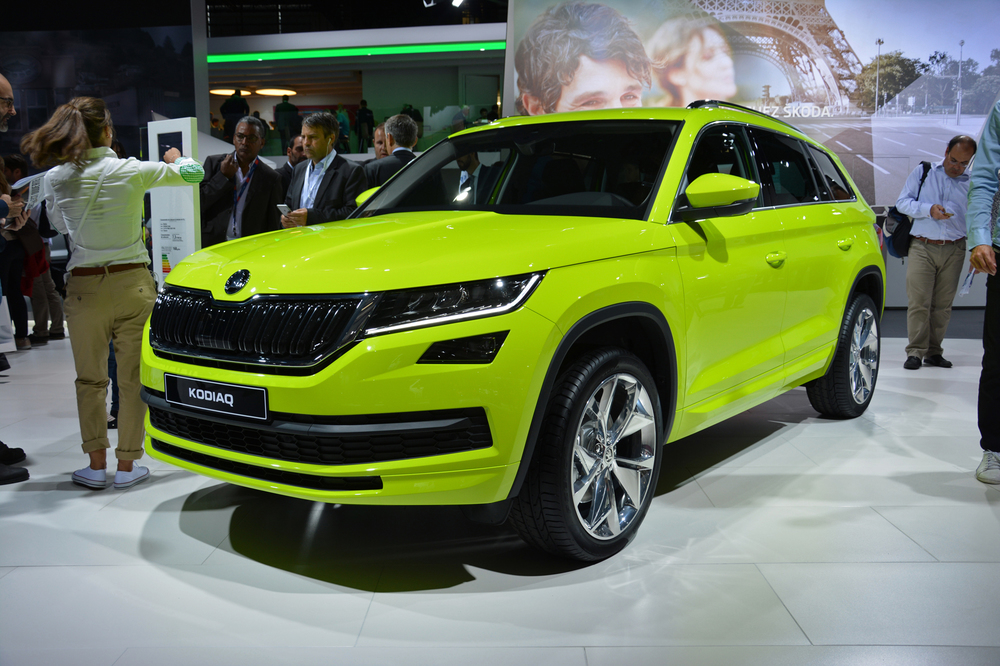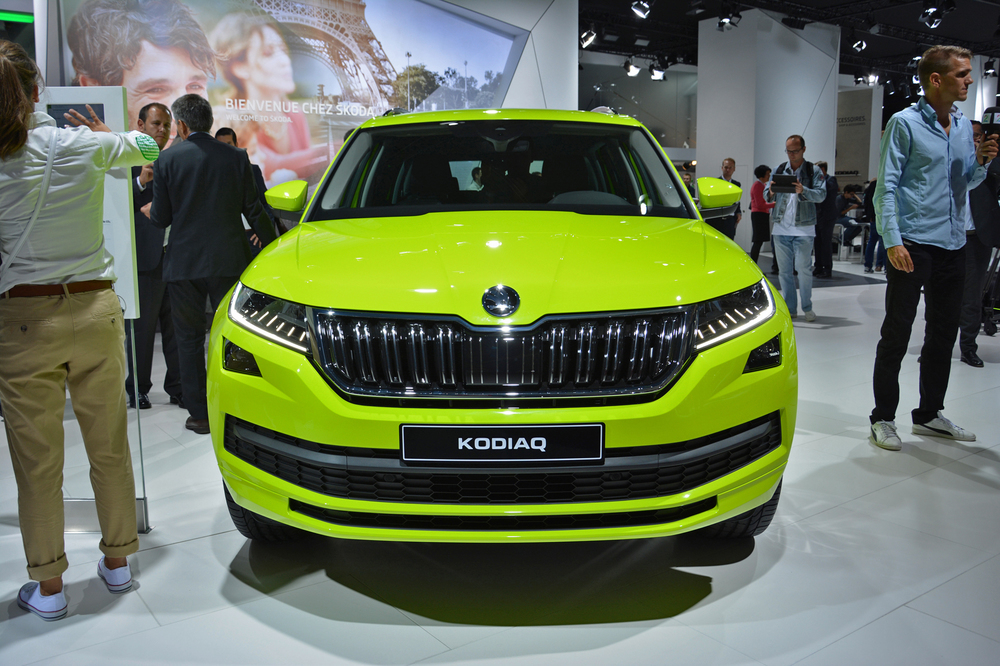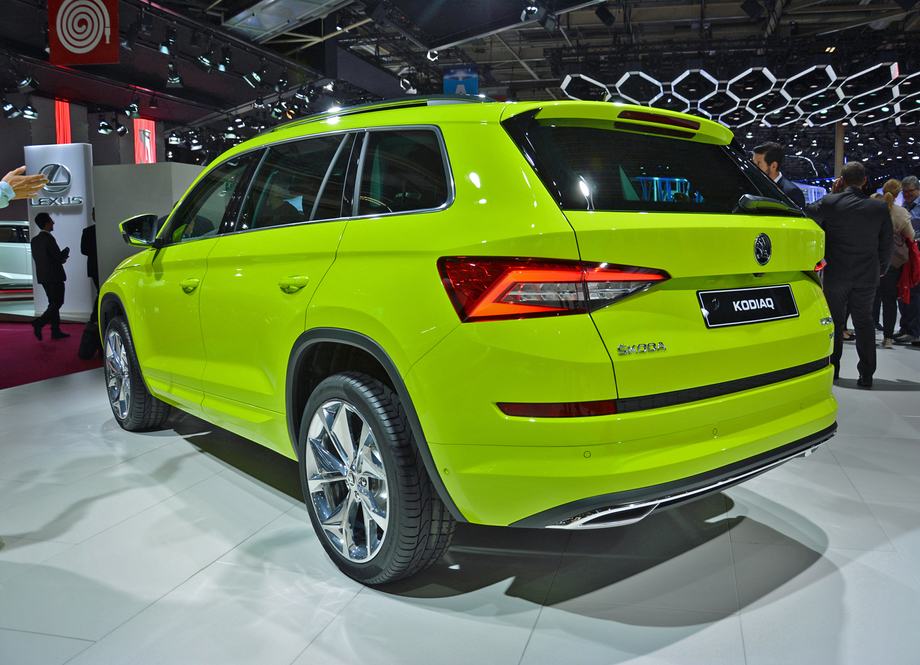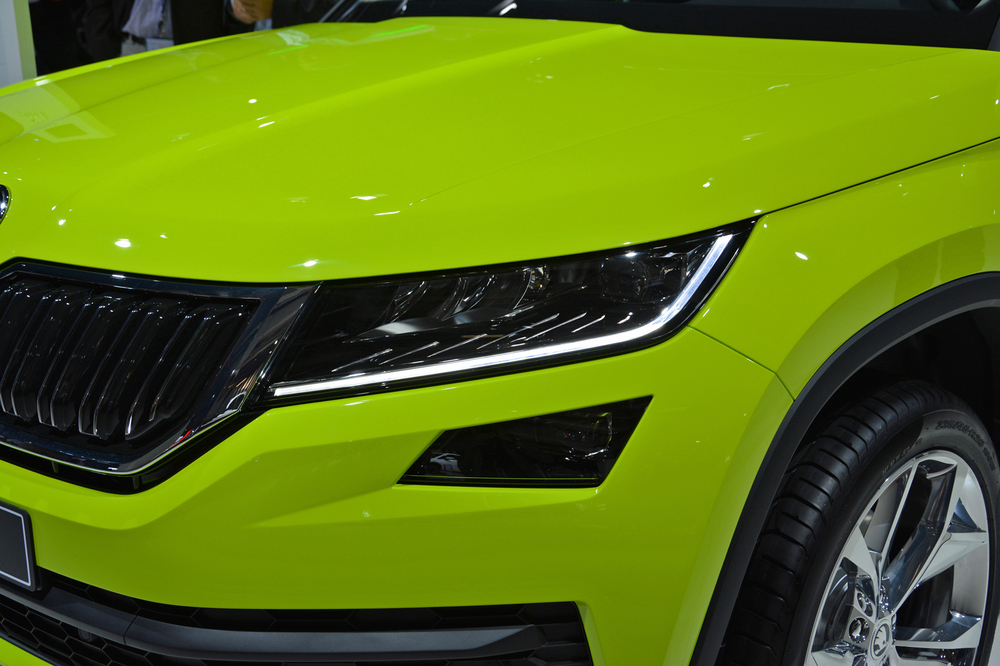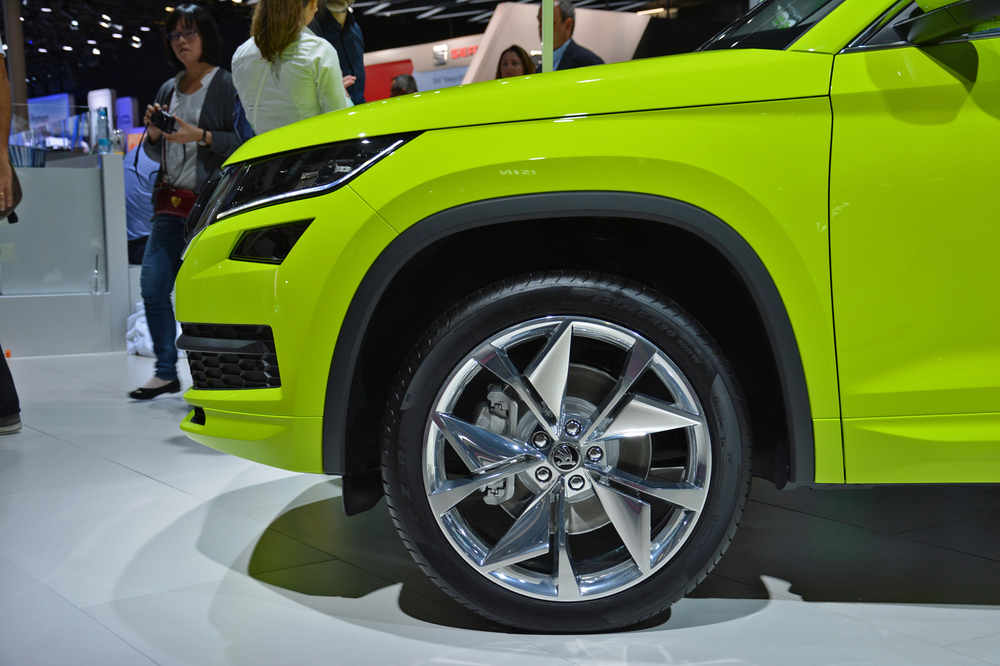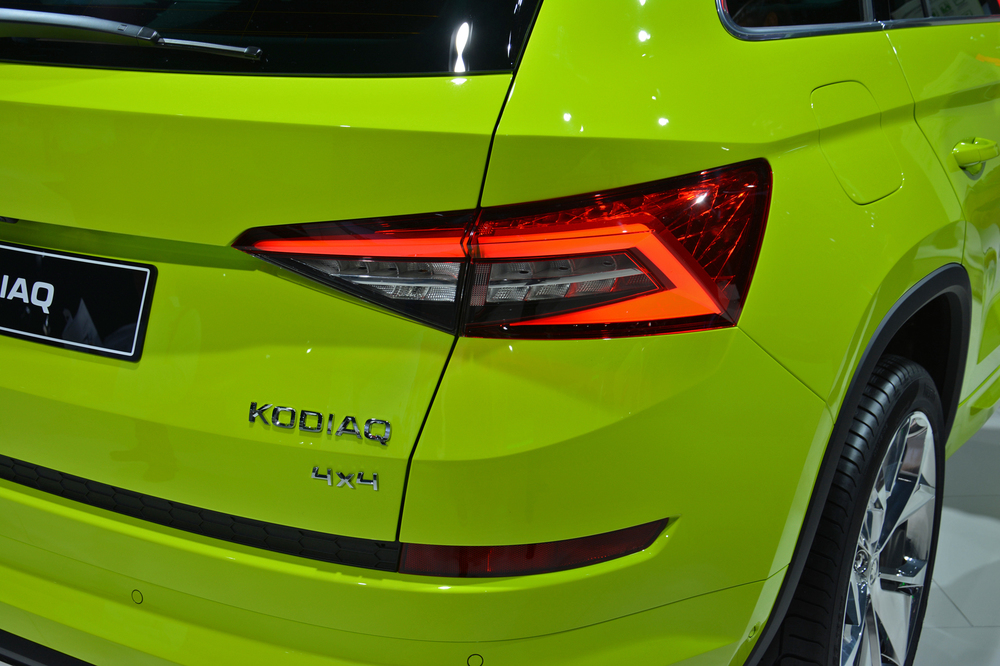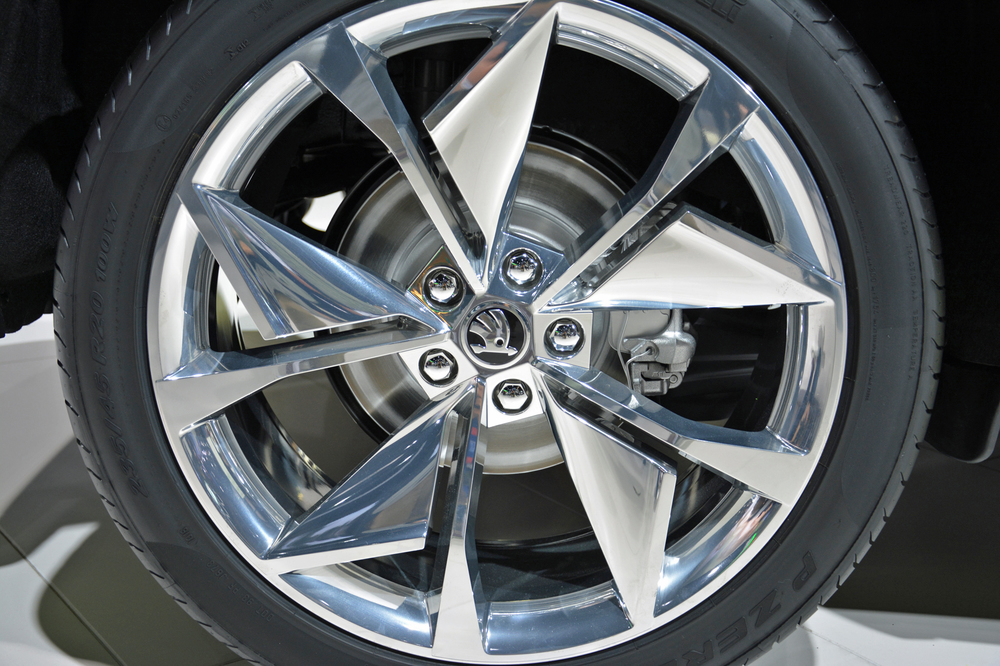Volkswagen’s Czech Republic-based Skoda division has introduced the Kodiaq, a seven-seater model that stands out as the brand’s first true SUV. Named after one of the largest bears on earth, the Kodiaq just made its public debut at the Paris Auto Show.
Previewed by the VisionS concept, the Skoda Kodiaq is closely related to the long-awaited three-row SUV that Volkswagen is expected to unveil before the end of the year. The two siblings ride on Volkswagen’s modular MQB platform, but the Kodiaq features a brand-specific design characterized by a thin grille, angular lights on both ends, and chiseled flanks. The look will inspire all of Skoda’s upcoming crossovers and SUVs.
The Kodiaq’s cabin offers a three-spoke steering wheel, a familiar instrument cluster with four analog gauges and a configurable thin-film transistor (TFT) screen, as well as a large touchscreen for the infotainment system. Niceties such as leather upholstery, ambient lighting, and heated seats are available on select trim levels. The Kodiaq also boasts an available wireless phone charger, a feature that’s not nearly as widespread in Europe as it is in the United States.
Like all members of the Skoda lineup, the Kodiaq gets its engines from the Volkswagen parts bin. The Czech firm’s big SUV is available with a turbocharged 1.4-liter gasoline-burning four-cylinder that makes either 125 or 150 horsepower, or a 2.0-liter turbo four tuned to generate 180 horses. Buyers who prefer diesel have only one option to choose from, a 2.0-liter TDI four-banger offered with either 150 or 190 horsepower.
A six-speed manual transmission comes standard, and buyers can pay extra with a six- or a seven-speed dual-clutch automatic gearbox controlled by shift paddles. All-wheel drive is also available at an extra cost. The Kodiaq can tow about 5,500 pounds in its most potent configuration.
Read more: This is what a 21st-century Škoda coupe would look like
The 2017 Skoda Kodiaq will go on sale shortly after it greets the show-going public in Paris. Its main markets will be Europe, of course, and likely China, but there’s a small chance we could see the SUV on our shores in the coming years. Skoda executives recently admitted that they’re considering returning to the United States after about five decades of absence.

